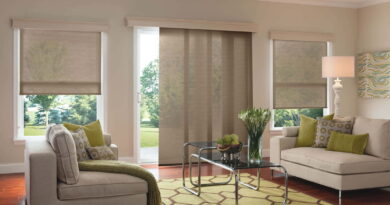The Different Types of Waterproofing Membranes you Should Consider for Your Property
As a property owner, one of the best things you can do for your property is to provide it with adequate protection against water damage. This is because without an appropriate waterproofing system set in place, the foundation and structural integrity of your property can become compromised and this can lead to safety concerns and financial loss on your part. Thankfully, London Damp Solutions could solve this by installing a waterproofing membrane that can help you adequately protect your property from water damage.
These membranes are usually water-tight layers of special materials that are placed on or around the surface of your building’s foundation to keep water out and prevent damage. Apart from your building’s foundation, waterproofing can also help prevent water damage in areas like the roof, basement walls, water tanks, bathrooms, kitchens, decks and terraces. There are also many different types of waterproofing membranes, each with its own unique characteristics. Keep reading to learn more about them.
Before diving into the different types of waterproofing membranes, it is important to know that waterproofing membranes can be classified into two groups namely; sheet-based waterproofing membranes and liquid-applied waterproofing membranes.
Sheet-Based Waterproofing Membrane
This category of waterproofing membranes is generally available in the form of rolls. During application, the sheets are first unrolled before they are laid on a firm surface. With the help of a hot tar-based adhesive and blowtorches, the membrane will adhere to the substrate. The hot tar-based adhesive is also used to join adjacent membranes together.
When it comes to this type of membrane, special attention needs to be paid to the joints between sheets, as doing them incorrectly can lead to leaking. Sheet-based membranes are also consistent in quality (most are factory-produced except for the joints).
Liquid-Applied Waterproofing Membrane
These types of waterproofing membranes are applied to a surface in a liquid form that can either be brushed on or sprayed. Once applied, the liquid produces an impenetrable membrane with no welds, laps or seams.
To regulate thickness, contractors typically apply more liquid chemicals per unit area. They also try to finish the entire area to be waterproofed in a single day, so as to avoid cold joints. Liquid-applied waterproofing membranes are typically preferred over sheet-based membranes because they are joint-free. The only catch here is to ensure that the thickness of the membrane is precisely correct, as ripping and breaking may occur if the membrane is too thin.
Some of the different types of waterproofing membranes are:
Self-Adhesive Modified Bituminous Membrane
This type of waterproofing membrane is sheet-based and made using materials like polymers, asphalt, tackifiers and mineral stabilizers. Polyester, fiberglass, or a combination of both can also be added to strengthen this type of membrane. During installation, a release film or paper covering the self-adhesive layer is removed and the membrane is allowed to adhere to the substrate.
Polymer-Modified Bitumen Membrane
Polymer-modified Bitumen is another type of sheet-based waterproofing membrane, and it is one of the most widely used types. A top quality of this type of membrane is that the material is able to withstand high mechanical loads and temperature fluctuations. This makes them ideal for providing reliable, effective, and long-term waterproofing. This membrane also provides great flow resistance, making it possible for it to be used in a very hot climate. They can also be used as an underlay for pitched roofs (serves as a vapour barrier).
Polyurethane Membrane
These are water-based and fiber-enhanced polyurethane membranes that are mostly applied to prevent water damage on screeds, cover tiles, concrete beds, etc.
Thermoplastic Membrane
These membranes are great for waterproofing commercial roofing systems. They are typically made of thermoplastics like PP (polypropylene), ethylene-propylene, and polyester. They usually come reinforced and contain colourants, UV absorbers, flame retardants and other additives to create the desired qualities.
Polypropylene Membrane
This special waterproofing membrane is manufactured from Bitumen. They come in rolls and each roll is about 10m long and 1m wide, so it can cover an area of about 8.7 m2. It can be used on any type of building and it provides effective and long-lasting waterproofing.
EPDM Membrane
This type of membrane is made of high-quality EPDM rubber. Some of its properties include tear strength, elongation, high tensile strength, weather-resistance and resistance to ozone, UV rays, alkalis, acids and heat aging.
Conclusion:
Preventing water damage on your property is important and waterproofing membranes are the way to go. They are beneficial for all types of buildings, including; residential, commercial and industrial facilities. There are several different types of waterproofing membranes to choose from and the common types are; polypropylene, thermoplastic, EPDM, polyurethane, polymer-modified Bitumen and self-adhesive modified bituminous membranes.




